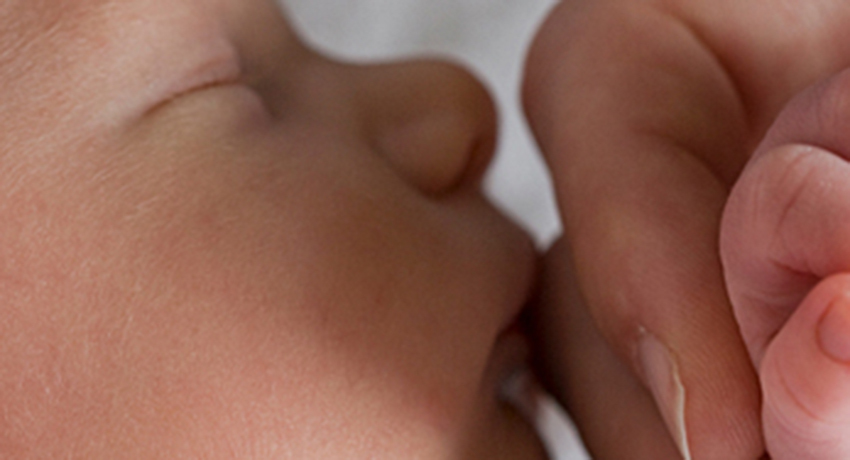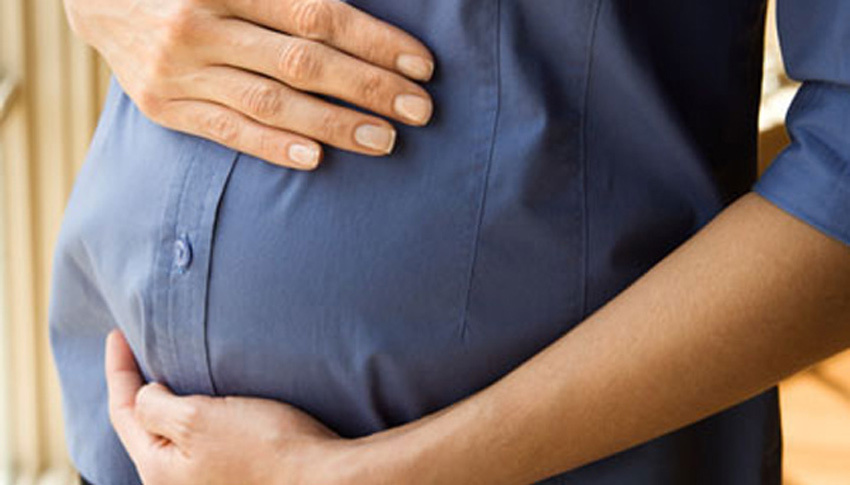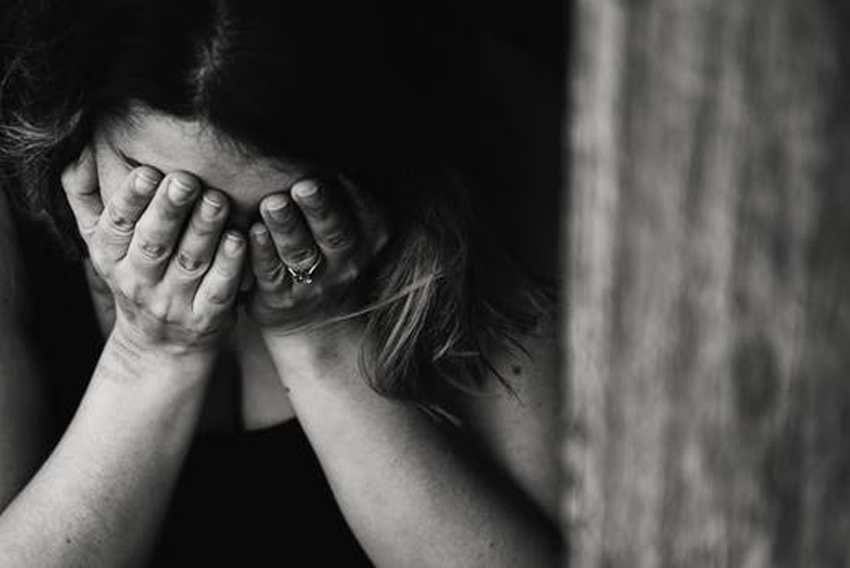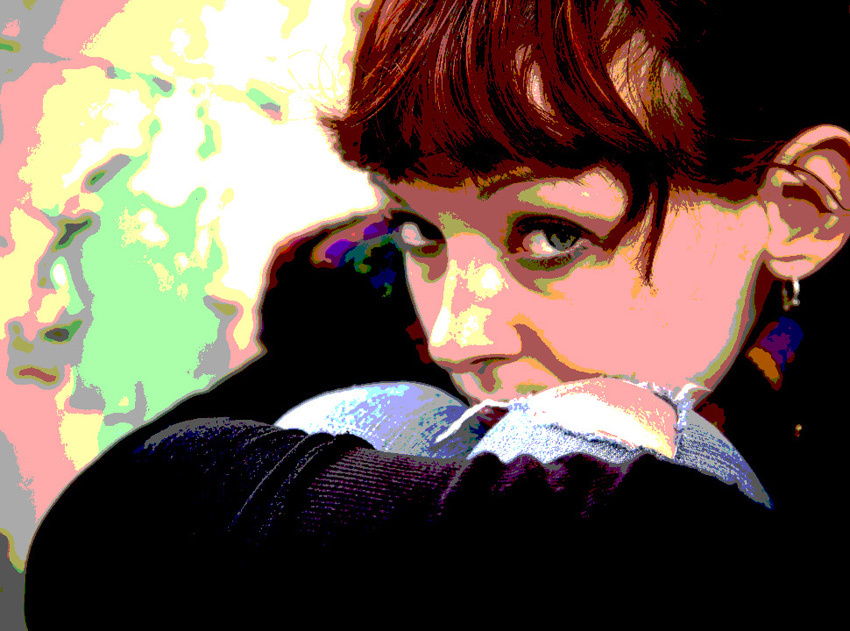
Abortion: selling the nightmare
For the abortion campaign it is important to sell the ideas of ‘choice’, ‘freedom’ and ‘rights’ because the reality is so horrible; the dream is really a nightmare, and even their most appealing campaigns tend to rebound against them, revealing the truth behind the spin.
The idea of choice is certainly appealing, but applying it to unborn humans reduces them to commodities to be chosen or rejected simply because of their place of residence, i.e. the womb. As soon as we think about what is being chosen the idea becomes less appealing and, tellingly, it is not necessary to kill a commodity.
The idea of freedom is also attractive, but if allowing their offspring to be killed is the price women must pay for freedom, abortion is hardly in the same league as abolishing slavery. If having children is a form of slavery then all mothers are slaves, but most would rather die themselves than see their children killed in order to ‘win their freedom’; we should be liberating pregnant mothers from their problems, not from their unborn babies.
Campaigners describe abortion as a human right, but the 1948 UN Declaration of Human Rights enshrines the right to life from conception rather than bestowing the ‘right to kill’; that was something Hitler exercised, based solely on strength – ‘might makes right’.
Claiming that abortion is essential for sexual equality simply invokes George Orwell’s Animal Farm - ‘all are equal, but some are more equal than others’ – for when it comes to being legally killed, just about anybody is more equal than the unborn.
Judith Jarvis Thompson’s famously compared pregnancy with a person being kidnapped by the Society of Music Lovers and having a famous unconscious violinist with a fatal kidney complaint plugged in to their circulatory system to keep them alive. This attempted ‘ethical’ justification was seized upon by campaigners to argue that women need abortion to defend them from an uninvited aggressor - the unborn child - even though it means innocent children must pay with their lives for an act over which they have no control, i.e. being conceived.
Nobody can choose to come into existence - even famous violinists and abortion advocates - but somebody else can choose whether they are born; a baby’s birth now depends more on luck than law.
The idea of abortion saving the life of the mother is another long-time staple of the campaign, but given modern obstetric care is increasingly difficult to sustain. Pro-abortionists even allege that ‘so-called pro-lifers’ support capital punishment, although they themselves support capital punishment for the innocent unborn.
As one by one the old arguments fail the reality test, the abortion campaign has opted for catchy slogans, but despite its feminist overtones, ‘my body, my choice’ is deeply sexist, signalling that men need take no responsibility for their own children. The subtext was made explicit by the ‘feminist’ H. G. Wells, who advocated abortion for this very reason; he even pressured one mistress to abort their child; she refused, but now some men, emboldened by the message, physically attack their pregnant partners when they refuse to ‘choose’ abortion.

Female Empowerment
Slogans of female empowerment bestow a feminist gloss on the abuse of women who can expect no help from the abortion campaign when facing long-term post-abortion trauma. And as with other ‘progressive reforms’, legalisation was a behaviour changer, encouraging a casual attitude to sex that led to more crisis pregnancies, which led to more abortions; thus the purported solution to the ‘problem’ increased the number of ‘problems’, and thousands of babies were conceived, destined never to be born.
Instead of demanding real choice for women, the ‘right to choose’ campaign would silence anyone offering alternatives. Their increasingly aggressive campaign jars with the portrayal of abortion as a tragic necessity, but the mainstream media has ignored both the aggression and any news that shows abortion in a bad light - like Kermit Gosnell and the Planned Parenthood foetal body parts scandal – while trumpeting any stories that show ‘abortion rights’ under threat.
In fact the pro-life vigils outside abortion clinics do pose a threat - to the abortion industry, which is losing money because so many women change their minds when offered help to have their babies. Sensational claims about pro-life harassment, cited in support of the campaign for ‘buffer zones’ around abortion clinics - ironically termed ‘safe spaces’ - are uncritically relayed by the media despite a complete lack of evidence, while they ignore numerous internet examples of pro-abortion activists violently intimidating pro-lifers; however, such newspapers undermine their own case with accompanying pictures of ‘dangerous’ pro-lifers silently praying.

Apparently, even silent prayer must be silenced – something which newspapers that denounce censorship have ignored; indeed, one even launched a ‘special investigation’ into pro-life counselling centres allegedly misleading pregnant women, but their exposure of ‘fake news’ turned out to be fake news, because all they found was pro-life centres offering a range of pre- and post-natal services - about as unsurprising as abortion clinics offering only one ‘service’; ‘Babies not killed shock’ might have been a more apt headline.
The media have also swooped on the TV adaptation of Margaret Atwood’s The Handmaid’s Tale, a dystopian vision of a future ‘pro-life’ America where poor young women are raped and forced to bear children for the wealthy but barren women of the ‘religious’ ruling class. The victims’ red and white outfits, a rather more colourful version of 17th-century Puritan garb, have been eagerly co-opted by abortion campaigners, regardless of the fact that in the dystopian present many women are pressured, sometimes violently, not to bear children but to abort them.
The abortion advocates' trump card
However, rape is the abortion advocates’ trump card, despite the practical difficulties of finding, catching and sentencing assailants, which often takes longer than nine months; however, although rape is horrible, ‘Handmaids’ accidentally underlines the fact that abortion itself is so horrible that in order to justify it advocates have to conjure up the even more horrible, albeit fictitious scenario of an official programme of systematic mass rape.
It may seem strange that those seemingly convinced of the truth of their case feel the need to resort to fiction or to outright lies, but it is an inadvertent admission that they cannot find any crime with which to charge the pro-life movement; if any real harassment was going on – by pro-lifers, not pro-abortionists, obviously - it would be plastered all over the press.
Perhaps the violent effort required to suppress the truth about abortion – essentially a violent attack on mothers and their unborn babies – is fuelling the abortionists’ more aggressive approach; but this aggression also smacks of desperation. The ‘shout your abortion’ campaign could be seen as a response to the ‘Silent No More’ initiative, in which women publicly reveal their negative experiences of abortion; but having women ‘shout their abortions’ in order to remove the ‘stigma’ and normalise it as just another ‘health treatment’ – as RCOG president Professor Lesley Regan put it, like ‘getting bunions sorted’ - also looked like a desperate attempt to regain the initiative in a faltering campaign. Once again it backfired as the image of callous and selfish females ruined the carefully-crafted portrait of compassionate campaigners pleading on behalf of desperate needy women.

And the spectacle of women celebrating in the streets of Dublin on hearing the result of the Irish abortion referendum backfired too; it came as a shock to the English who, having swallowed the ‘tragic necessity’ argument and spending 50 years trying to sweep the whole embarrassing issue under the carpet, suddenly discovered that nine million of these ‘rare’ operations have been carried out since 1967.
Campaigners portray existing abortion laws as anti-woman, as in an open letter to Prime Minister Theresa May, co-ordinated by Amnesty International UK and signed by 67 high-profile women; it demanded: ‘Give us choice and control over our own bodies: Decriminalise abortion’ accompanied by the slogan ‘#NowForNI’. However, it reeked of imperialism in imposing anti-life laws on Northern Ireland against the wishes of all communities there, while their Parliament is not operational; moreover, the demand for reproductive rights was somewhat bizarre in view of the ages of some of the signatories, which ranged from 68 to 85 years.
And if ‘shouting your abortion’ is counter-productive, so is the vision of privileged women demanding abortion for poor women rather than giving them material help to have their babies.
When campaigners call for abortion laws to be relaxed they insist that it will make no difference because instead of obtaining illegal abortions, women will seek legal abortions; but the lesson of all such ‘liberalisation’ is that the easier and quicker it is to get abortions the more abortions will be got.
The inevitable outcome of the current campaigns for decriminalisation and for women to be allowed to take the abortion pill at home is a holocaust of abortions - anywhere, for any reason, carried out by anybody, with no legal protection, no medical oversight and no statistics to aid public scrutiny. But even if the medical injuries to women can be concealed, the public will have to confront thousands of ‘unwanted pregnancies’ disposed of via the sewers - an issue not even addressed by the water industry.
The Trust women Slogan
The decriminalisation campaign’s slogan ‘trust women’ implies that anyone who disagrees distrusts women, but the widespread, decades-long scandal of child sexual abuse officially facilitated by the confidential provision of abortion suggests a more apt slogan might be ‘Trust men to abuse women – and children’. What better way for an abuser to dispose of the evidence than abortion?
So now we come to the great new idea – a gorgeous baby advertising the ‘services’ of Planned Parenthood, America’s largest abortion chain; in between clips of a smiling angelic infant the video says: “She deserves to be loved. She deserves to be wanted. She deserves to be a choice.” It concludes: “Stand with Planned Parenthood”. The message could be translated into the vernacular as ‘People shouldn’t have kids they can’t afford - but initially many people assumed the image was a pro-life advertisement. After decades of avoiding any mention of what abortion actually means, suddenly the ‘unwanted pregnancy’, the ‘unplanned pregnancy’, the ‘blob of cells’ - the not-human, not-living, non-person - turns out to be a baby; or it would if not stopped with their ‘help’.
Like all such campaigns, this one backfired spectacularly; it raised the question as to why women so concerned about giving their babies the best in life should be given abortions rather than actual help. Such women make the best of mothers; why take away their children?
True, the irrational idea has been mooted that abortion helps women to be better mothers, but this echoes the eugenics arguments of a hundred years ago, when people like Marie Stopes, who called for ‘more from the fit, fewer from the unfit’, insisted that the ‘unwanted child’ was bound to suffer, therefore it would be better if such children were never born.
Hitler starting putting these ideas into practice during the 1930s, prompting the English Eugenics Society to emphasise ‘voluntary’ birth control, abortion, sterilisation and euthanasia; then as now, however, they could not square the eugenics circle, because mentally incompetent individuals cannot give authentic consent to anything. After the War the movement limped on until the Sexual Revolution, when campaigners claimed that abortion was the answer to illegitimacy and ‘shotgun marriages’. As psychiatrist W. Lindesay Neustatter, under the heading ‘Eugenics’, argued:
Now that it is almost axiomatic that delinquency is associated with bad homes, it seems illogical to insist that an unwanted child…be brought into the world, not only into bad physical circumstances but with a parent who will not love it. If, as so often, the child is also illegitimate, and its mother psychopathic, or alcoholic, or defective - what future has it got? It is said that legislation to permit abortion would encourage immorality; but this type of irresponsible woman is not influenced by moral considerations anyway.
In the wake of the Sexual Revolution, ‘My body, my choice’ implies that the ‘right to abortion’ is essential to safeguard the ‘right to sex’; however, since no woman can force any man to ‘have sex’ that argument invokes the ‘right to rape’, although even the #MeToo movement has been useful to the abortion campaign, suggesting that the victims of sexual harassment ‘need’ the right to abortion.
Is a 'woman's right to choose' really a 'man's right to abuse'?
But that in turn raises the question of why women should have abortions because men cannot control themselves – far from ‘a woman’s right to choose’, that would be ‘a man’s right to abuse’. Moreover, the argument that the ‘born’ should enjoy more rights than the unborn is just another instance of ‘might makes right’ and can easily be turned against women, who are mostly smaller and weaker than men.
When not insisting that abortion is a human right that should concern everyone, campaigners insist that it is a private matter that need concern only a woman and her doctor; but then they demand that women should be able to take abortion pills with no medical involvement. They tell pro-lifers: ‘No one’s forcing you to have an abortion’, but some women and girls are forced to have abortions – something the ‘right to choose’ brigade ignores. And although Margaret Atwood, author of The Handmaid’s Tale, has called pro-life laws “a Form of Slavery”’, under the 1857 American Supreme Court ruling Dred Scott, African-Americans could not be citizens; like the unborn today, they were considered non-persons and treated as commodities.

Also like today, those who objected to slavery were told that no one was forcing them to own slaves; that everyone should be allowed choice in the matter – everyone except the slaves, that is. And the abortion campaign is strangely reluctant to address the fact that ethnic minorities are vastly over-represented in the abortion statistics; but when it comes to pre-birth genocide, it seems that after all, ‘Black Lives Don’t Matter’.
In the latest abomination, new US laws allow abortion up to birth with the possibility of infanticide if the baby is born alive - New York calls it a ‘“fundamental right”’ and defines a ‘“person”’ as ‘“a human being who has been born and is alive”’ – shocking a great many even among those who considered themselves ‘pro-choice’; however, Ann Furedi of BPAS saw New York’s abortion law as aspirational.
And so it goes on – every campaign backfires, every message turns sour, every argument falls apart. But project Big Abortion is seen as ‘too big to fail’; the juggernaut thunders on, crushing men, women and most of all unborn babies in its path – and yet there is hope.
There is a limit to the number of times a campaign can shoot itself in the foot without falling over, although perhaps come next Christmas they will present the image of a crib with a manger containing only a packet of abortion pills.
Increasingly, however, the mantra ‘my body, my choice’ provokes the response ‘what about the other body – the one who has no choice?’ Every mother helped by the pro-life movement and every child saved is a living, breathing witness to life. They will be silent no more; and when the lies fall silent, the nightmare will be over.
References
- [1] https://lowey.house.gov/media-center/press-releases/congressmembers-introduce-reproductive-rights-are-human-rights-act-human
- [1] Judith Jarvis Thompson, ‘A Defense of Abortion,’ Philosophy and Public Affairs 1 (1971): 47–66
- [1] John Finnis, ‘The Rights and Wrongs of Abortion: a reply to Judith Thomson’, in Human Rights and the Common Good, available at https://www.jstor.org/pss/22651
- [1] Wells saw abortion as the necessary back-up for contraceptive failure; when his mistress Rebecca West became pregnant, Wells tried to persuade her to abort their child, but she refused – as their son relates (Anthony West, H. G. Wells: Aspects of a Life (London: Hutchinson & Co. Ltd., 1984), p. 19)
- [1] https://www.elle.com/uk/life-and-culture/a20743404/child-destruction-campaign/?mc_cid=fadaf190e8&mc_eid=c2228029a3;
- https://www.mirror.co.uk/news/us-news/football-player-kills-pregnant-cheerleader-13717402?fbclid=IwAR1wiiJgCwdIFaOI_VXbkC_lZKhIX6Aihn0vVpCxbdcKu_0CAMYEjzgFMXM
- [1] Clare McCullough of The Good Counsel Network reported that at a Parliamentary Home Affairs Select committee hearing chaired by Yvette Cooper MP (who introduced her own ‘buffer zone’ bill in 2015), she and Antonia Scully of SPUC “were accused of everything from vandalising the car of a Marie Stopes staff member (Ealing Police were later able to confirm they had received no such report) to accusations that we chase women and call them murderers. It was quite terrifying to find that anything anyone said against us was taken as fact, yet even things we could objectively prove were treated as falsehoods” (‘Buffer Zones: A Year On’, Good Counsel News, Christmas 2018).
- [1] https://www.lifenews.com/2018/10/16/violent-pro-abortion-rally-ends-with-abortion-activists-throwing-firebombs-at-church
- https://www.lifenews.com/2018/11/26/abortion-activists-are-increasingly-harassing-pro-life-people-praying-at-abortion-clinics/
- https://www.lifenews.com/2018/10/03/watch-abortion-activist-brutally-assaults-pro-life-woman-help-needed-to-identify-him/
- [1] https://www.edinburghlive.co.uk/news/edinburgh-news/tories-criticised-wanting-input-pro-15205897
- http://www.mancunianmatters.co.uk/content/130777532-we-saw-woman-throwing-holy-water-over-clinic-pro-abortion-campaigners-say?mc_cid=5b4bdb46c9&mc_eid=c2228029a3
- http://home.bt.com/news/uk-news/fresh-calls-for-action-on-abortion-clinic-buffer-zones-after-high-court-ruling-11364281420114
- [1] https://www.telegraph.co.uk/technology/2018/11/04/google-maps-lead-women-fake-abortion-clinics/
- [1] https://www.lifenews.com/2018/12/04/handmaids-tale-costume-designer-is-glad-activists-use-the-creepy-costumes-to-promote-abortion/
- [1] https://www.lifenews.com/2018/12/14/shout-your-abortion-campaign-gains-steam-as-more-women-brag-about-aborting-their-babies
- https://christiannews.net/2018/12/17/shout-your-abortion-founder-releases-book-of-essays-from-women-not-sorry-for-ending-their-childs-life
- [1] https://www.dailymail.co.uk/news/article-4889942/Top-medic-calls-looser-abortion-laws.html
- [1] https://www.spuc.org.uk/news/blog/2017/april/49-years-on-and-abortion-funding-is-shrouded-in-secrecy
- [1] Maria Horan, ‘Amnesty’s latest desperate attempt to change Northern Ireland's abortion law’, Precious Life, available at http://www.preciouslife.com/blog/101/maria-horan-amnestys-latest-desperate-attempt-to-change-northern-irelands-abortion-law/; ‘Open letter to Prime Minister Theresa May: Give us choice and control over our own bodies: Decriminalise abortion: #ItsTime #NowForNI’, Amnesty International UK, November 21, 2018, available at https://www.amnesty.org.uk/press-releases/kate-beckinsale-claire-foy-jodie-whittaker-and-olivia-colman-call-theresa-may-change at December 9, 2018
- [1] https://www.spuc.org.uk/news/press-releases/2018/october/westminster-told-not-to-impose-abortion-on-northern-ireland--poll
- [1] Baroness Helena Kennedy is 68, Zoë Wanamaker is 69, Dame Vivienne Westwood is 77, Vanessa Redgrave 81, Baroness Joan Bakewell 85 (December 10, 2018)
- [1] http://www.spiked-online.com/newsite/article/we-cant-rely-on-judges-to-defend-abortion-rights/21546?utm_medium=email&utm_campaign=Mays%20Brexit%20betrayal&utm_content=Mays%20Brexit%20betrayal+CID_79b79b9cb9a4c6e147ba437c37dd7781&utm_source=Email%20marketing%20software&utm_term=We%20cant%20rely%20on%20judges%20to%20defend%20abortion%20rights
- [1] Per personal correspondence
- [1] See: Peter McLoughlin, Easy Meat: Inside Britain's Grooming Gang Scandal Paperback (World Encounter Institute/New English Review Press, 2016). [1] The 40-second video, ‘The Chosen,’ was created by the Agenda Project, an abortion advocacy group, to promote Planned Parenthood (LifeNews, available at https://www.lifenews.com/2018/11/12/watch-horrible-pro-abortion-ad-shows-beautiful-newborn-baby-says-its-ok-to-abort-her/ at November 13, 2018)
- [1] One woman at a ‘blessing’ service for an abortion clinic shared a ‘lullaby’ she said her unborn baby had communicated to her before she aborted him or her
- https://www.lifenews.com/2018/12/12/watch-mom-sings-creepy-lullaby-she-says-her-baby-gave-her-before-killing-her-in-abortion/
- [1] https://www.statnews.com/2018/12/05/how-abortion-denial-affects-children-well-being/?utm_source=STAT+Newsletters&utm_campaign=dd89d92c29-First_Opinion&utm_medium=email&utm_term=0_8cab1d7961-dd89d92c29-150406701
- https://www.lifenews.com/2018/12/05/pro-abortion-researchers-claim-abortions-help-moms-care-for-their-children-better/
- [1] See: Ann Farmer, By Their Fruits: Eugenics, Population Control and the Abortion Campaign (Washington DC: Catholic University of America, 2008)
- [1] W. Lindesay Neustatter, ‘A Change of Outlook’, in Abortion in Britain: proceedings of a conference held by the Family Planning Association at the University of London Union on 22.4.1966, (London: Pitman Medical Publishing co. Ltd., 1966), pp. 22-24
- [1] This includes ‘webcam’ abortions, where the doctor ‘sees’ the woman only via a computer https://www.lifenews.com/2018/12/13/michigan-legislature-passes-ban-on-dangerous-webcam-abortions/
- [1] https://www.salon.com/2017/06/05/margaret-atwood-handmaids-tale-abortion-slavery/
- https://www.lifenews.com/2017/06/05/abortion-activist-margaret-atwood-says-pro-life-laws-are-a-form-of-slavery/
- [1] https://www.lifenews.com/2018/12/04/christian-wheaton-college-smears-black-pro-life-speaker-for-talk-on-race-and-abortion/
- Although Planned Parenthood did claim “If you're a Black woman in America, it's statistically safer to have an abortion than to carry a pregnancy to term or give birth #ScaryStats” https://twitter.com/PPBlackComm/status/925380307242582016, implying that it would be ‘safer’ if no black babies were born
- [1] https://www.spuc.org.uk/news/news-stories/2019/january/new-york-lights-up-pink-to-celebrate-extreme-abortion-bill?utm_source=SPUC+News+List&utm_campaign=22fe22c854-news190114_COPY_01&utm_medium=email&utm_term=0_826f492851-22fe22c854-148123137&mc_cid=22fe22c854&mc_eid=c2228029a3 The effects of this law are already being felt in the case of a young pregnant woman who was stabbed in the abdomen by the father of her child; he will be charged with only one murder. https://nypost.com/2019/02/08/accused-murderer-spared-abortion-charge-after-cuomos-new-law/
- [1] https://www.spiked-online.com/2019/02/07/abortion-is-not-a-crime/
Featured
- Campaign to stop EU funding out of state abortions - tell your EU commissioner to vote NO
- Judge recuses himself from case of woman praying in censorship zones for “apparent bias”
- I’m a Celebrity star criticises “sad” UK law that aborts babies with Down Syndrome up to birth
- British actress speaks out on “serious risk” assisted suicide bill has for those with eating disorders
- Caplan’s “Tragic Hysteria of Abortion” discusses the flaws with mainstream Turnaway Study interpretations
- Backlash as Scotland report proposes legalising sex-selective abortion up to birth
- Canada hits new record as 1 in 20 deaths a result of Euthanasia
- Ben Scallan defends pro-life on TV show Dinner with the Enemy
- Influencers share the loss of their beloved unborn baby
- Dublin woman with cancer says unborn child was sent to save her
- Mother and baby doing well after surgery for mother’s cancer during pregnancy
- Josiah: Abortion Survivor
- Loving the Unborn
- Rally for Life 2025
- Don't assist Suicide 2024


























